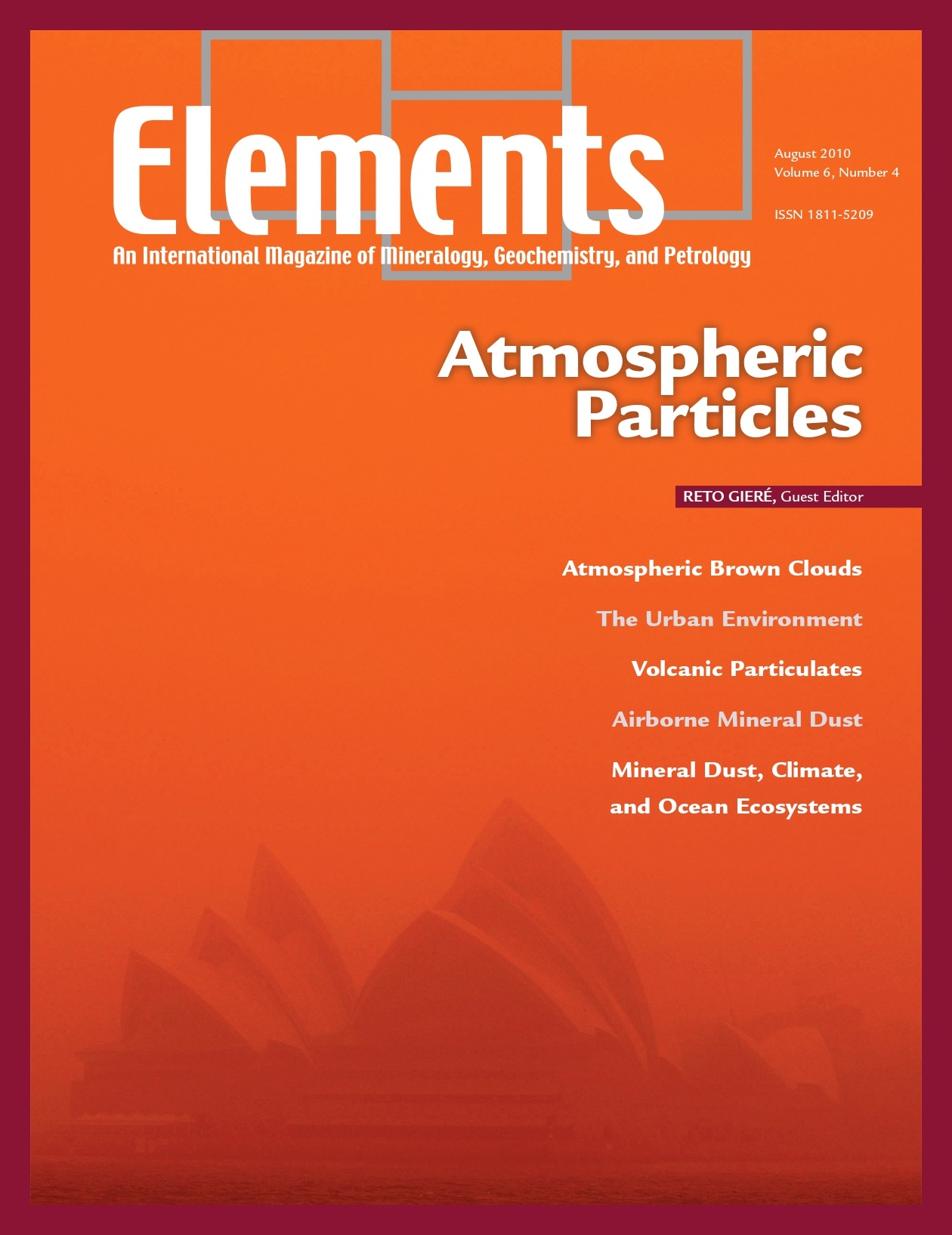
Bentonites – Versatile Clays, April 2009, Vol. 5, No. 2
June 28, 2024
Cosmochemistry, February 2011, Vol. 7, No. 1
June 28, 2024Atmospheric Particles, August 2010, Vol. 6, No. 4
$20.00
Solid atmospheric particles range in size from a few nanometers to several micrometers and are generated through both natural processes and human activity. Even though these particles are derived from spatially limited source areas and typically become airborne during short-term events, they are ubiquitous globally due to atmospheric circulation.
Atmospheric Particles
August 2010, Vol. 6, No. 4
Solid atmospheric particles range in size from a few nanometers to several micrometers and are generated through both natural processes and human activity. Even though these particles are derived from spatially limited source areas and typically become airborne during short-term events, they are ubiquitous globally due to atmospheric circulation. Depending on their physical and chemical properties, these solid aerosols have a major impact on the radiative properties of the atmosphere and glaciers, on cloud condensation, and on the chemical composition of oceans and soils. Because these particles affect transportation and human health, they have recently become the focus of government attention and regulation. This issue of Elements explores the atmosphere as an exciting new research area for mineralogists and geochemists. It illustrates the most prominent types of atmospheric particles and discuss their key effects on climate and ecosystems worldwide.
Why You’ll Love Elements Magazine:
- Expert Contributors: Articles written by renowned researchers in the field of geoscience.
- Engaging Content: Join a community of readers who are passionate about Elements.
- Exceptional Quality: Each issue is printed on high-quality paper with stunning visuals and detailed illustrations that bring complex scientific concepts to life.
Order your copy of the August 2010 issue of Elements magazine today and delve into atmospheric particles.
Related products
-
Fluids in Planetary Systems, January 2005, Vol. 1, No. 1
$20.00Water and other geofluids play an important role in the geochemical and rheological evolution of the Earth and other bodies in the solar system. These fluids are responsible for the formation of hydrothermal mineral deposits, affect eruption behavior in volcanic systems and the geophysical properties of the mantle, and significantly affect the way in which rocks deform and fracture.
-
Glasses And Melts: Linking Geochemistry And Materials Science, October 2006, Vol. 2, No. 5
$20.00Geological interest in studying melts stems from early recognition that melts play a fundamental role in determining the physical and chemical behaviour of magmas and magmatic processes. However, due to the inherent difficulties associated with working at high temperatures, much of the geological research over the last 30 years has used quenched melts or glasses as proxies for melts themselves.
-
Water On Mars, June 2006, Vol. 2, No. 3
$20.00During the past several decades, spacecraft data have transformed the planets from astronomical objects into geologic worlds. Mars is the current focus of planetary exploration, and NASA’s objectives for this effort are based on the theme, “follow the water.




